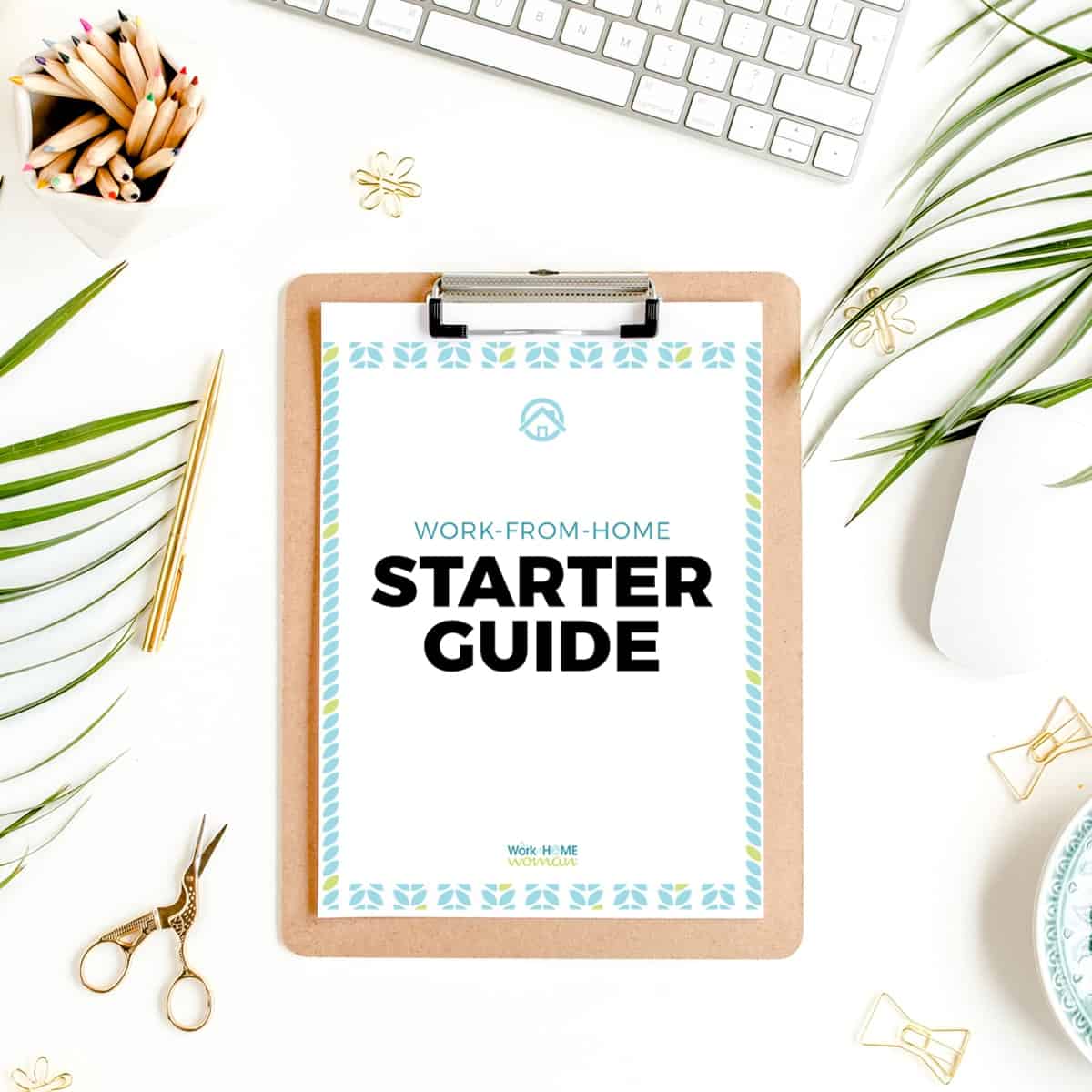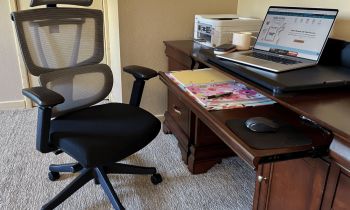Remote work has given many of us the gift of flexibility, allowing many people to define their professional lives on their own terms. However, with this freedom comes the challenge of maintaining a healthy work-life balance.
Working from home often blurs the boundaries between work and personal life, making it crucial to establish clear practices that allow for adequate self-care and downtime. If you don’t manage your workload and keep a poor work-life balance long-term, this can lead to burnout, anxiety, and even health issues.
Luckily, there are a few realistic ways to balance work and prioritize your mental health as a remote worker. Here are eight tips for balancing work and life when you work remotely.

1. Get a Daily Routine
Working from home is still work, and you need a daily routine to stay organized and productive. Start by setting regular work hours, including break times for meals or exercise. Waking up at the same time each day and following a morning ritual can help signal the start of the workday. Even if you’re not leaving the house and commuting to work, you should prepare as if you were by setting a clear time to sit down at your computer and begin your tasks for the day.
It’s equally important to have a clear end to your work duties so you can transition to personal time. While flexibility is key to remote work’s appeal, you can definitely allow for changes when necessary but aim to keep a consistent schedule.
- For example, your daily schedule may look something like this:
- 7:00 am – Wake up and stretch, read, and/or do a quick meditation
- 7:30-8:15 am – Go for a run/walk or workout
- 8:15-9:00 am – Shower, get dressed for the day, and light tidy up around the house while listening to an audiobook
- 9:00-9:30 am – Prepare and eat breakfast
- 9:45 am-12:00 pm – Work
- 12:00-12:45 pm – Break for lunch
- 12:45-4:00 pm – Continue second work session
- 4:00-4:30 pm – Start winding down and putting away work for the day
2. Create a Dedicated Workspace
Your workspace shapes your mindset. Dedicating a specific area of your home to work can enhance your focus and create a boundary between your professional and personal life. Choose a spot with natural light, away from high-traffic areas in your home. Keep it organized and free from distractions. When you’re in that space, you’re at work — and when you step away, you’re off the clock.
It can be tempting to work from the kitchen table, your couch, or even your bed. While this setup may seem cozy, it also further blurs the line between work and leisure. Try investing in a small desk and a basic workplace setup instead. This doesn’t have to be in an enclosed office room, but it will allow you to leave work in a specific area of your home at the end of each day.
3. Timeblock Your Schedule
Effective time management is the key to a productive remote workday and balancing work with life. Consider utilizing block scheduling, a technique where you allocate chunks of time to specific tasks. This method allows for deep work without interruptions and ensures that all aspects of your role are attended to.
Prioritize tasks based on their urgency and impact, and tackle high-priority items during your peak focus hours. As an effective time management strategy, you can plan out your days in advance and batch certain tasks together.
This can also be done for some of your personal activities. A common complaint of people who work long hours is that they don’t have a lot of free time for relaxation or to keep up with other responsibilities like cooking and errands. You can batch schedule errands each week and consolidate this down to one day. Another option is to plan meals in advance and prepare some dinners in batches (larger portions) so you’ll have leftovers and won’t need to cook each night.
4. Make After Work Plans
Another way to start balancing work and life when you work remotely is to make plans for after work so you’re motivated to set boundaries and end your work day on time. Your plans don’t have to be extravagant, but it may help to plan a date night with your partner or an outing with your friends during the week.
Leisure activities that you do at home are also a good idea. For example, you can plan to read a good book in the evenings or spend time on a hobby. Or maybe you want to plan a trip to the local farmer’s market on a Saturday morning or a weekend camping trip. If you don’t plan for personal time, filling your daily schedule with extra work is all too easy.
5. Take Breaks and Time Off
It’s tempting to power through the workday without stopping, but this can lead to burnout and reduced productivity. Regular breaks, including brief walks or stretching, can refresh your mind and body.
- Use the Pomodoro Technique or a similar method to schedule intermittent rest periods. As a reminder, here’s how it works:
- Identify a task you need to complete.
- Set a timer for 25 minutes.
- Work on a task with no distractions.
- When the alarm sounds, take a 5-minute break.
- Repeat the process three more times.
- Take a longer 30-minute break and start the process again.
- Longer breaks for lunch or exercise are also vital for maintaining energy levels and mental clarity. You can also take time to journal in the mornings or evenings for a few minutes to decompress and prioritize self-care.
When it comes to taking time off work, be sure to use your paid vacation days and sick days if you’re a W2 employee. If you freelance and are self-employed, you will need to plan ahead for vacations and days off. Set aside a small percentage of your income each month to serve as your PTO fund. Intentionally work mental health days and vacation time into your calendar throughout the year, even if you don’t actually end up going on vacation.
Working seven days per week and 24 hours per day will not benefit your professional life in the long run and will only contribute to long-term fatigue. Life is short, so be intentional with scheduling and enjoying time off.

6. Maintain Healthy Relationships Outside of Work
Remote work can be isolating, especially if you live alone. Make an effort to maintain social connections, whether through virtual coffee dates with colleagues or in-person meetups with local friends.
Join professional communities or local groups to foster supportive relationships and engage in meaningful conversations that break up the work-centric mindset. You can also join social media groups for remote workers or create your own Slack Channel. You might be surprised to find others in your area who work remotely and are interested in meeting up regularly.
7. Ask for Help
Despite our best efforts, balancing work and life when you work remotely can still be challenging at times. Don’t hesitate to reach out for help when you need it. This could mean delegating tasks from your to-do list or seeking support from friends or family members. You may need to set up childcare for a few days per week so you can work without distractions.
Additionally, if your employer offers resources for managing work-life balance, take advantage of them. Remember, asking for help is not a sign of weakness but rather a sign of strength and self-awareness. By acknowledging when you need support, you can prevent burnout and potentially health problems by maintaining a healthy balance in the long run. So don’t be afraid to speak up and ask for assistance when needed because it can improve your home life, too.
8. Evaluate Regularly and Adjust Your Work-Life Balance
Your needs and circumstances will evolve, so it’s essential to regularly assess whether your routines are still serving you well. Be ready to adapt and make changes as needed. Listen to your body and mind — if you’re feeling overwhelmed or fatigued, it might be time to reassess your workload or the strategies you’re using to manage it.
Balancing Work and Life Wrapup
Remote work offers the freedom to define your schedule and environment, but with this comes the responsibility of managing work-life integration well. Remember, achieving a healthy work-life balance is an ongoing process that requires constant attention and effort.
By following these tips, you can experience the positive effects of creating clear boundaries and routines that promote productivity, well-being, and fulfillment in both your professional and personal life.








Leave a Comment